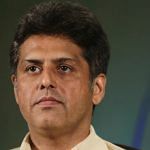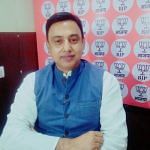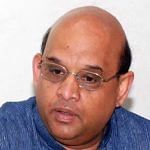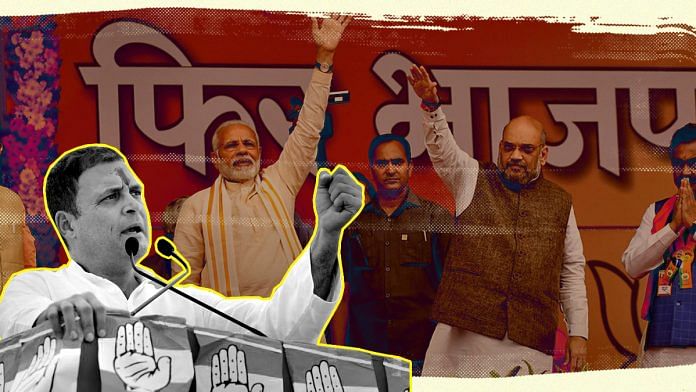The trends in the state elections show that the Congress party benefitted from anti-incumbency mood and outperformed the ruling BJP in Rajasthan, Madhya Pradesh and Chhattisgarh – heralding significant gains in the Hindi heartland.
ThePrint asks: Can Congress build on state poll results or will Modi be harder to beat nationally in 2019?
Winds blowing across Hindi heartland have changed and will result in a different govt in 2019
 Manish Tewari
Manish Tewari
National Spokesperson, Congress
State elections usually stick to their own dynamic. However, in the past 53 months, Prime Minister Narendra Modi has sought to personalise every election. Whether it’s a state election, or a local body election, or a larger parliamentary election as we saw in 2014, he has been at the forefront. Therefore, the verdict that has come from the Hindi heartland, which essentially comprises rural and agrarian states, is highly indicative of an atmosphere of change. The winds that are blowing across the Hindi heartland have changed. It is definitely going to result in a different government in 2019. It is too early to spell out what the contours of this government will be, but one thing is very clear: It is going to be a different government from the one we see right now.
As far as Rajasthan is concerned, we have to analyse the numbers. We had a problem of plenty in that state. We will have to see how much difference the rebels have made in the polls. We really need to dissect how much the rebel factor has diminished the margin of victory, which was expected to be much broader.
Telangana is different dynamic altogether. K. Chandrasekhar Rao had put certain schemes in place for the marginalised sections, which seemed to have played its role.
It goes without saying that the scenario in 2019 Lok Sabha elections will be remarkably different than what we witnessed in 2014.
We are disappointed with Chhattisgarh results, need to introspect
 Zafar Islam
Zafar Islam
National spokesperson, BJP
It is purely the fatigue factor, which led to today’s results. The BJP has been in power for 15 years in Madhya Pradesh. Despite this, there isn’t any significant anti-incumbency wave against the party. Here, people of the state choosing to vote for another party is expected.
Chhattisgarh results came as the biggest surprise for us. We are extremely disappointed and need to introspect on where we went wrong.
Our achievements in the last 4.5 years are something that the poor and the marginalised are well aware of. Contrary to what our detractors will say, neither demonetisation nor GST has had any negative impact on these elections. If that would’ve been the case, we would’ve been defeated by a huge margin in all these states, which isn’t the case – Chhattisgarh is the exception where local issues led to our defeat.
Message from state polls is loud and clear: Modi magic works no more
 Purushottam Agrawal
Purushottam Agrawal
Professor and author
Whatever be the final tally, the political message of these state elections results is loud and clear: The Modi-magic works no more. Unlike the Uttar Pradesh elections, the ill-effects of demonetisation were palpable to the voter this time, and so was the irritating emptiness of BJP’s rhetoric—from GST to temple. To top it all, we had the UP CM adding his own aggressive language to Modi trademark phrases like ‘Congress ki vidhwa’.
On the other hand, Rahul Gandhi’s strategy of questioning the PM’s much-hyped integrity (with the core slogan ‘Chaukidar chor hai’) coupled with his soft-spoken, articulate image has obviously worked well. His attempts of playing down the anti-Hindu image of Congress have also been effective. Congress’ performance becomes all the more credible given the open hostility of a major section of electronic media and liberal discomfort with the so-called soft Hindutva.
This is even more significant in the background of another Modi-Shah ‘jumla’ and ‘Congress-mukt Bharat’. In fact, the best comment in this context has come from H.D. Deve Gowda, who has described these results as a step towards ‘arrogance-free’ India.
As far as 2019 Lok Sabha election is concerned, it is too early to say, but the repeat of 2014 is unlikely. It may still be an NDA dispensation, but there is no possibility of BJP getting a majority on its own.
To assume that momentum of state victory will be carried forward to 2019 elections would be over-reach
 Sandeep Shastri
Sandeep Shastri
National co-ordinator, Lokniti Network
Do the Congress victories over the BJP in three states signify a return and set the tone for next year’s Lok Sabha polls? At one level, the rare taste of victory for the Congress against the BJP, which has consistently beaten it in straight fights in the last four years, surely heralds a revival.
The Congress will clearly enter the new year with greater enthusiasm among its cadres and more confidence to take on its opponents. It also places the Congress party at the nucleus of an emerging anti-BJP alliance. Yet, it must also be conceded that the context of the just concluded assembly elections is distinctly different from that of the coming 2019 national polls. Over the years, the voters are increasingly making a difference between a national election and a state assembly poll. Thus, to assume that the momentum of victory in the state assembly polls will automatically be carried forward to next year’s national elections would be an over-reach.
The BJP would want to make the Lok Sabha polls a referendum on the calibre of its leadership. On the other hand, the Congress would want to persuade the anti-BJP coalition to makes its contest with the BJP focused on issues and not on individuals. The state poll results have set the trend, but do not necessarily define the final factors on which the Lok Sabha elections will be fought.
BJP’s performance in state polls should not be underestimated for two obvious reasons
 Hilal Ahmed
Hilal Ahmed
Associate professor, CSDS
The BJP’s performance in the state elections must not be underestimated for two very obvious reasons.
First, the party’s vote share did not change drastically. It continued to attract its committed voters and posed a serious challenge to the Congress. For instance, in Madhya Pradesh, the BJP managed to get around 41 per cent votes, despite remaining in power for three terms in the state. By this logic, the party has lost only 4 per cent of votes in comparison to the 2013 assembly election.
The so-called anti-incumbency factor in the three main Hindi-speaking states, thus, does not affect the popularity of the party among its core constituency.
Second, the BJP’s political discourse of Hindutva remained unchallenged. The Congress failed to produce a counter-narrative to reach out to the voters. Instead, the party relied on a highly confused version of ‘soft Hindutva’. Even they did not bother to give up the historically evolved position of the Congress on secularism and the rights of marginalised communities.
These two aspects—stable vote share and the established discourse of Hindutva—indicate that the BJP is still in an advantageous position with regard to the 2019 Lok Sabha election. The Congress, on the other hand, needs to work hard to produce a positive political narrative for 2019.
BJP can dial up the Hindutva rhetoric by several notches after the state election defeats
 Fatima Khan
Fatima Khan
Journalist, ThePrint
State elections and national elections are different ball games and tend to follow courses of their own. But the fact that the prime minister of the country has been at the forefront of nearly every election means that the results aren’t just a verdict against BJP in the states, but quite possibly uproar against the national leadership as well.
However, the Congress was expected to breeze through with a large margin of victory in Rajasthan, but the party needs to introspect why they failed to capitalise fully on the anti-incumbency wave against Vasundhara Raje in the state. The Congress can’t afford to get complacent with this sorry excuse of a victory.
The BJP, on the other hand, may just fall back on their Hindutva rhetoric and even dial it up several notches in the coming months. This is their go-to game plan and the minorities in every state would be subjected to this onslaught.
The Congress needs to ensure their on-ground organisational forces are intact and can maintain the momentum. They also need to get their house in order when it comes to deciding state leadership. This holds true for both Rajasthan—where there is a question mark on whether Ashok Gehlot or Sachin Pilot will occupy the CM’s seat, and Madhya Pradesh—where there is a three-way fight between Kamal Nath, Digvijaya Singh and Jyotiraditya Scindia.
By Fatima Khan, journalist at ThePrint. You can follow her on twitter @khanthefatima.




Mr Modi will be FAR EASIER to beat in 2019. There will be no “Mama ji” to hide behind, nationally. Mr Modi will stand stark alone in front of 125 crore people whom he promised the moon, and delivered miseries. If Hindutva balderdash of Adityanath were effective, it would have worked in the present polls in three states of the Hindi belt. If EVMs don’t malfunction, Mr Modi can start preparing for his retirement.
At the very least, these three wins cement the Congress party’s claim to lead the opposition forces, whatever shape or form the front takes. While the party has wisely refrained from staking its claim to the PM’s post at this premature stage, partly to avoid antagonising potential claimants like Ms Mamata Banerjee, partly to avoid setting up a presidential contest with such a powerful personage as the PM, should the Congress come close to 150 seats – its UPA I score – this would no longer be an issue to quibble over. Senior figures like Shri Sharad Pawar would not join the government; he would happily nominate his daughter for a Cabinet post. 2. Each state election, starting with Delhi in February 2015, although local factors and leaders are important, is also a referendum on the Central government. All the more as we come to the end of its first term. The debate will rage whether these disappointing results are a huge setback for 2019. Difficult to visualise a completely new set of factors by which voters will evaluate the government in Delhi vis a vis what was at work in this fairly broad swathe of territory. The incumbent might wish to think long and hard about how best to market itself to the national electorate after analysing these results. Especially in states where it is in power but the CMs are not of the calibre of the three tall leaders who were felled today.